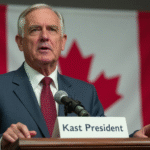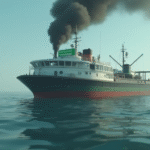Introduction
The World Resources Institute (WRI) Mexico has proposed rethinking the design of streets and urban infrastructure with a focus on road safety. In Mexico, the use of motorcycles has grown exponentially over the past decade, becoming an affordable, efficient, and widely adopted mode of transportation, especially for delivery services.
However, this surge has been accompanied by a concerning rise in road accidents involving motorcyclists. Between 2012 and 2022, the number of registered motorcycles increased by 330%, and currently, one-third of traffic fatalities in the country involve motorcyclists.
Relevance of WRI Mexico
The World Resources Institute (WRI) Mexico is a leading think tank that focuses on critical issues such as climate change, land use, and cities. Their expertise and research make their recommendations highly relevant for policymakers and urban planners in Mexico.
Five Key Elements for Safer Urban Infrastructure
1. Effective Speed Management
Speed is the most significant risk factor in fatal accidents. WRI emphasizes setting speed limits according to road type and environment, redesigning streets to naturally reduce traffic speed, and implementing technologies like speed cameras to ensure compliance.
A traffic-calming design not only protects motorcyclists but also pedestrians, cyclists, and other vulnerable road users.
2. Urban Planning with a Focus on Safety
High-density and commercial zones generate more points of road conflict due to the concentration of activities. These areas also see increased motorcycle usage for delivery services.
To reduce risks, WRI suggests incorporating traffic calming criteria into urban planning and establishing specific hours and zones for light cargo operations, providing better protection for those performing these tasks.
3. Safe Intersection Design
Between 50% and 70% of motorcycle-involving crashes occur at intersections. These critical points should be designed to ensure good visibility, reduce speeds, and be easily understood by all road users.
Mexico has technical standards regulating intersection geometry and signage, and their enforcement is crucial for improving road safety.
4. Review of Highways and Controlled Access Roads
Wide-lane highways often encourage high speeds and risky maneuvers like weaving. The study warns about the danger at lateral access points, where vehicles suddenly braking or accelerating may collide with motorcycles.
To mitigate this, it is recommended to narrow lane widths, improve signage in access zones, and establish clear speed limits in low-visibility areas.
5. Inclusive Streets and People-Centered Design
Motorcyclist safety is strengthened when streets are designed to protect all users. Measures such as safe pedestrian crossings, wider sidewalks, better signage, appropriate traffic signals, reduced lane widths, dignified public transportation and goods delivery spaces are essential.
These interventions not only save lives but also promote a more harmonious coexistence among different modes of transportation.
Key Questions and Answers
- What is the main issue addressed by WRI Mexico? WRI Mexico focuses on the growing number of motorcycle accidents in urban areas and proposes solutions for safer infrastructure.
- Why is effective speed management crucial? Speed is the most significant risk factor in fatal accidents. Proper speed limits, traffic-calming designs, and enforcement technologies can protect all road users.
- How does urban planning contribute to motorcycle safety? Incorporating traffic calming criteria and establishing specific hours for light cargo operations can reduce risks in high-density, commercial zones.
- Why is safe intersection design important? Intersections account for a significant portion of motorcycle accidents. Proper design ensures good visibility, reduced speeds, and clear understanding by all road users.
- What are the concerns regarding highways and controlled access roads? Wide lanes on these roads can encourage excessive speeds and risky maneuvers. Improving signage, narrowing lanes, and setting clear speed limits can mitigate these dangers.
- How do inclusive streets contribute to motorcycle safety? By prioritizing pedestrian crossings, wider sidewalks, better signage, and dignified spaces for public transportation and goods delivery, streets become safer for all users.






